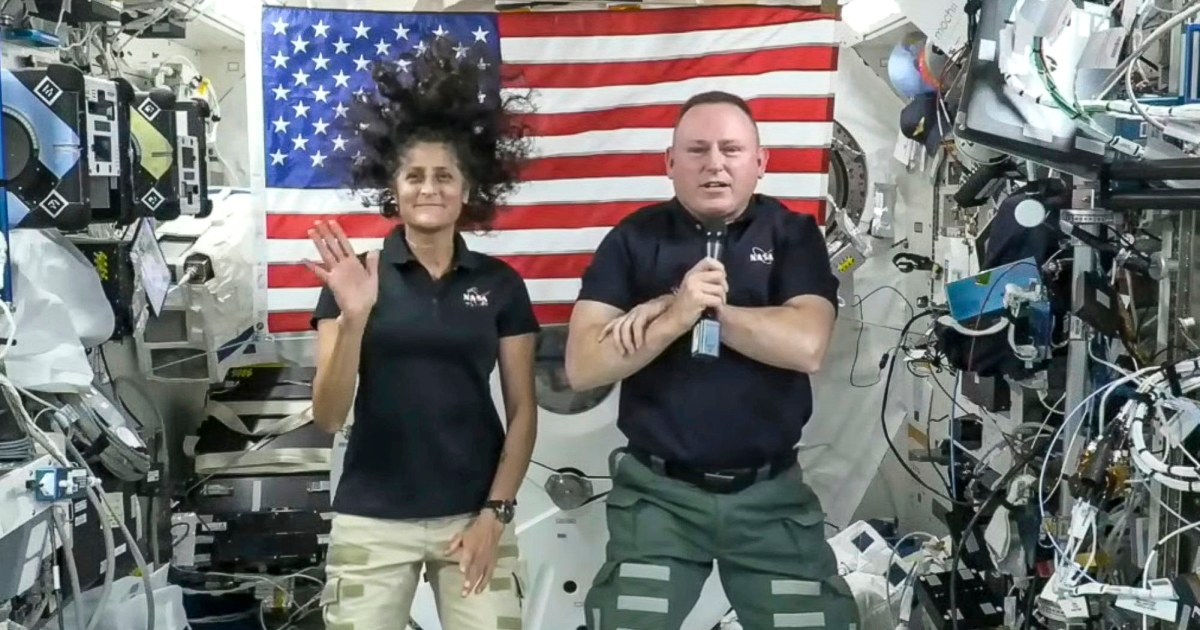The first crewed voyage of Boeing’s Starliner was supposed to last around a week, but the high-stakes mission is still in limbo eight weeks after launch.
Their high-stakes mission was supposed to last about a week — but 56 days later, two NASA astronauts are still aboard the International Space Station, waiting as teams on the ground try to figure out how to bring them home safely in the Boeing spaceship they rode to orbit.
The beleaguered Starliner capsule has two problems: its propulsion system is leaking helium and five of its thrusters malfunctioned as it was docking with the space station. Mission managers were aware of the leaks before the vehicle lifted off but had said they were unlikely to affect the flight or the astronauts’ safety.



So managers made that decision? Not engineers? Rocket scientists?
So they are all jockeying over who is going to fall on their sword when this ship blows up on reentry. We’re going to hear later about an engineer who tried to put a stop to it but was overruled because there was only a 30% chance of everything going to hell. It’s the Challenger all over again in slow motion.
Just scuttle the ship and send a rescue mission. And fire whoever they are throwing under the bus, since that’s the only closure we’re likely to get.
Steve Stich, the manager for the program, is an engineer.
Mission Manager is a technical role, not a managerial position. They might also be people managers, but the role is about managing the mission. And even if they are also people managers, they had to be engineers or scientists first to start working at NASA.
And I think they can’t simply scuttle the ship. I read they need humans in the ship to get it to properly disconnect from the station.
NASA actually employs a very large number of people who are neither scientists nor engineers. Going to space requires a very diverse workforce.
Also, it’s not “Mission Manager”, it’s “Mission Operations Manager”.
You’re right that someone doesn’t end up as the MOM of a mission without experience in the technical roles that they are managing.
Thanks for stating the obvious. I pretty clearly meant working at NASA in a technical role where one could move up to managing engineers/scientists. You don’t move from Human Resources or Legal or Janitor or Machinist or Admin Assistant or Graphic Designer or whatever to Mission Ops Manager or to a role people managing engineers/scientists (this COULD happen but would be incredibly rare).
As far as correcting me on Mission Operations Manager, I have no clue what their title is. I was only responding to the actual article saying “Mission managers were aware of the leaks.”
The leaks were examined and found to benon-critical. They were even controllable. No helium has leaked since docking with ISS and there is plenty to get home.
The problem has been the crew capsule and the space propulsion module are 2 different pieces. The capsule comes home. The propulsion module gets ditched in space. NASA and Boeing have been taking their time to review the propulsion module (leaks and all) while docked at ISS because they can’t bring it home.
Nothing much has changed from all that. NASA is in control of the mission. It’s all proceeding at their pace. I wouldn’t trust any spin Boeing makes. But watching the NASA mission reports shows there isn’t much reason for concern.
The fact that NASA has been considering the option to use the Dragon capsule to bring them back shows that there is some concerns.
That’s overblown per the latest NASA update a couple hours ago.
While waiting on engine test results part of the mission team has been brainstorming all kinds of new return contingency ideas that were never an option in the past. The SpaceX idea is one of 4 or 5 mentioned. It’s just the one the media ran with.
The main announcement today though was that all thrusters passed 3 hot fire simulations of a return mission. And that Starliner is likely fine to come home. The issues during approach seem to be understood and worked out.
Glad to be wrong about all that. Being an astronaut was my biggest dream 40 years ago. But we can’t all be astronauts, so I had to settle for my second dream - shitposting on the internet.
In all seriousness, it’s important work for the future of humanity. I don’t want someone to fuck it up for profit or because it’s not their ass on the line. I’m glad those fears are unfounded here.